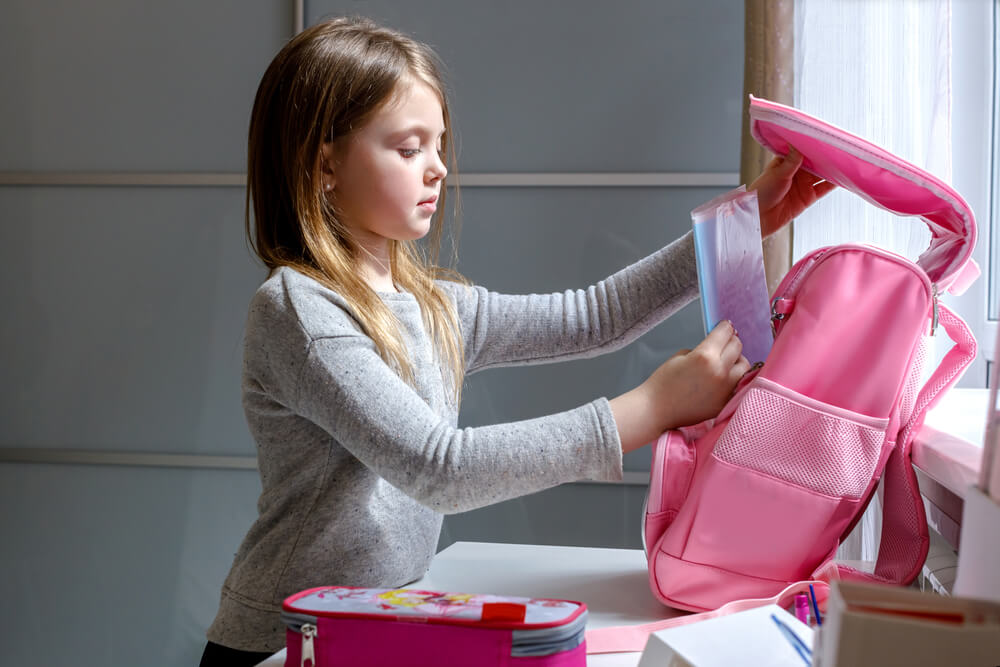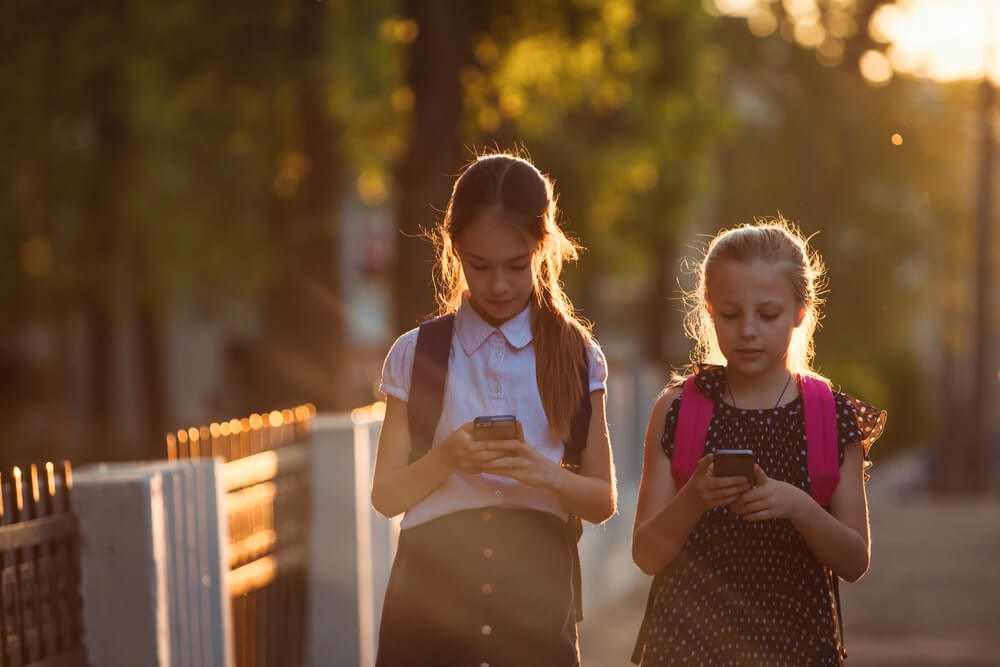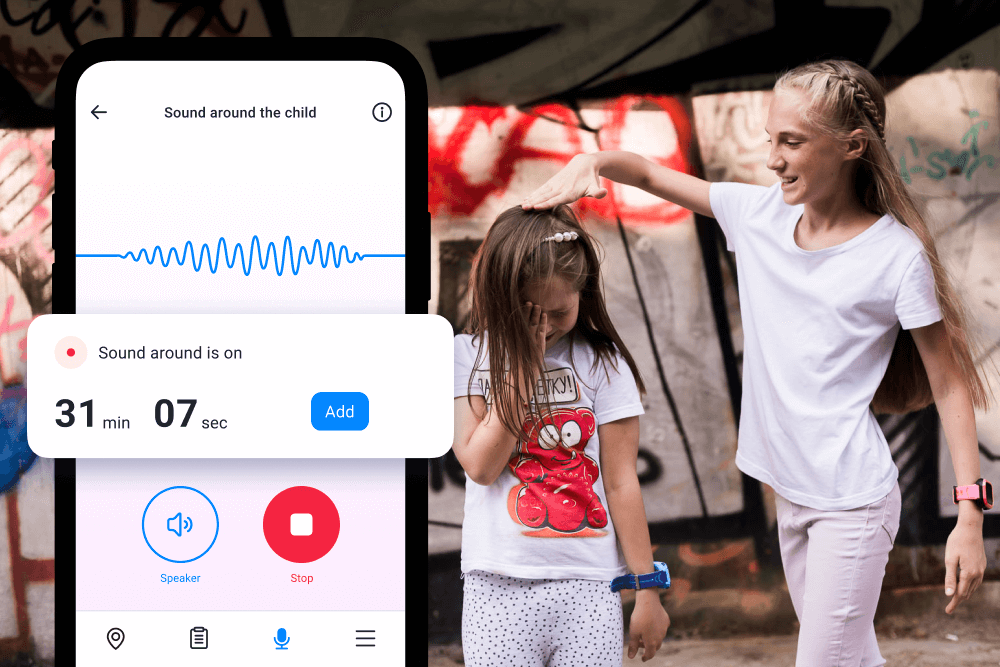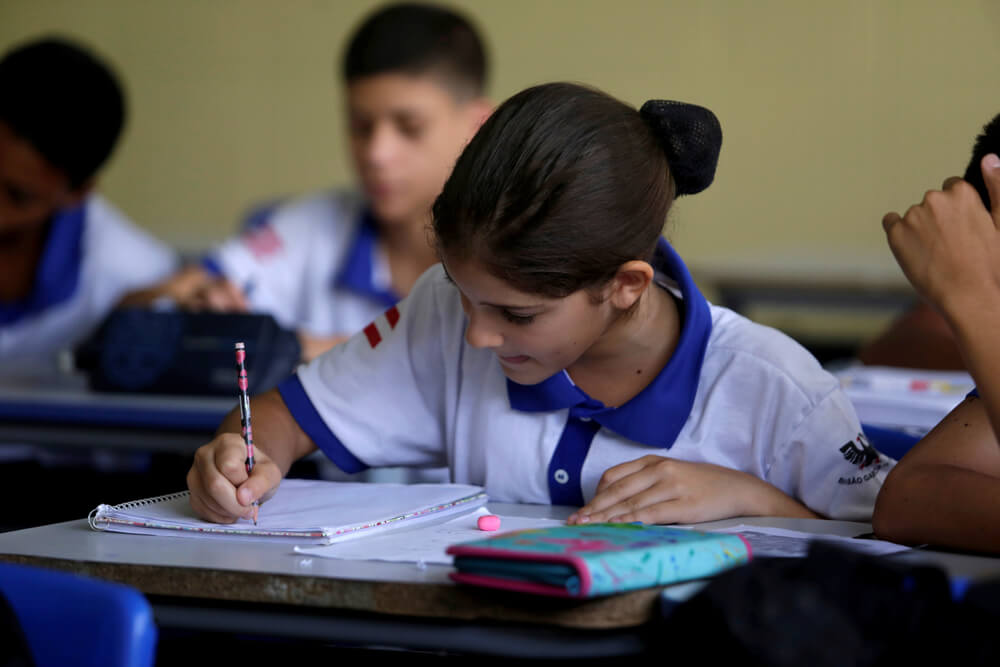How to Keep Your Child Safe at School: Parent Tips

It’s normal for parents to be concerned about their child’s safety, whether they’re in kindergarten or about to finish elementary school. Sometimes, moms and dads feel helpless when it comes to protecting their kids at school, though. This article provides practical tips and advice for how to safeguard your child, even when they’re on school property.
Contents:
- Statistics On School Shootings
- School Safety Plans
- Laws Regarding School Safety
- What Are the Basic Safety Rules for Kids?
- 8 Ways You Can Help Your Kid Stay Safe at School
- When And How Should You Check In On Your Child’s Safety?
- Remember, School Is Safer Than It Looks
- FAQ
Statistics On School Shootings

In 2022, there were more school shootings in the United States than in any other year since 1999. This was the year the infamous Columbine shooting took place. Hundreds of thousands of children in America have experienced gun violence at school—a place where they should feel safe.
Here are more specific numbers.
United States:
- School shootings are more common in the U.S. than in other countries, perhaps due to looser laws on gun control.
- according to the Center for Homeland Defense & Security, there were 153 incidents of gunfire on school grounds in 2022 and 249 incidents in 2021.
United Kingdom:
- The UK has significantly fewer school shootings compared to the United States.
- Strict gun control laws in the UK may contribute to lower rates of gun-related incidents.
Global Statistics:
- The Global Coalition to Protect Education from Attack reported that in 37 countries, there were over 11,000 targeted attacks on education between 2015 and 2020. Incidents increased by one-third between 2019 and 2020.
With these statistics, it’s no wonder parents are concerned about their children’s personal security when they leave for school each day.
School Safety Plans

Tatiana Mikhailina/Shutterstock.com
Perhaps the first step to safeguarding a child at school is to be aware of the school’s safety plan. Every school district in the United States has a plan that explains what to do if an emergency occurs.
The school’s safety plan includes emergency response protocols for various scenarios, such as evacuations and lockdowns. Physical security measures like surveillance cameras and controlled access points restrict unauthorized entry. Regular drills prepare students for emergencies, and mental health support resources are available. Collaboration with law enforcement and threat assessment procedures ensure a safe environment. The plan is continually reviewed and improved to maintain effectiveness.
It’s important for parents to be aware of this plan so that they’ll know what to do if the worst-case scenario becomes a reality. School safety plans are often made available at the beginning of each school year, but parents can request a copy at any time.
Laws Regarding School Safety
There are various state and federal laws governing school safety in America. These laws could dictate whether school professionals should carry firearms, how much money should be devoted to training and safety drills, access to mental health services, whether students are allowed to bring certain items to school that could be used as weapons, and the use of police and metal detectors.
Other laws might designate safe spaces in schools and require school safety audits at regular intervals. It could be important for parents to stay current on any laws passed that affect their child’s school. Here are some more resources that may be helpful when helping kids stay safe:
- National Conference of State Legislatures: School Safety
- SchoolSafety.gov
- 50 State Comparison: K-12 School Safety
- What Do We Know About the Effects of School-Based Law Enforcement on School Safety?
What Are the Basic Safety Rules for Kids?

iVazoUSky/Shutterstock.com
Schools have basic safety rules for kids to follow. These rules can vary depending on the school. Still, some common regulations may include:
- Entering and leaving the building at a certain time
- Only leaving the class with permission
- Avoiding loitering in the hallways
- Following the instructions of teachers and staff
- Using handrails on stairs
- Respecting personal space
- Reporting any suspicious or dangerous situations to adults
- Treating school property with care
Students should also be familiar with emergency exit routes and procedures, as well as understand the importance of respectful behavior towards classmates and staff.
Other rules may establish what type of bookbag a student can carry, where they’re allowed to eat their lunch, and who can check them out of school when they’re sick.
Parents can reinforce these basic rules at home, so children know what to expect in the school environment. Moms and dads can also set specific rules for kids outside of school such as asking permission before leaving the house or using a safe word before going anywhere with an acquaintance or stranger. Ultimately, parents and teachers can work together to protect children, no matter where they are during the day.
8 Ways You Can Help Your Kid Stay Safe at School

Ground Picture/Shutterstock.com
Understanding how to protect against potential dangers is essential to keeping students safe at school.
As school starts, parents should ensure they are familiar with the school’s safety protocols to keep their children secure. They can play a crucial role in enhancing gun safety awareness among students and the school community.
Keep Them Healthy (Physically And Mentally)
Perhaps the most fundamental way parents can safeguard their children at school is to bolster their physical and mental health. The healthier and more confident a child is, the better equipped they will be to keep themselves safe when mom, dad, or another trusted adult isn’t around.
In addition to regular visits to the pediatrician, it may be a good idea to keep an eye on a child’s mental health as well. Any symptoms of childhood depression, anxiety, or behavioral disorders should be addressed immediately. Doctors can write referrals to mental health specialists for these and other conditions.
Of course, providing a safe and structured home environment may be critical to a child’s well-being, now and in the future. This might include establishing a routine for the school day, including a healthy breakfast, a place to do homework and a reasonable bedtime. Emphasizing good nutrition and physical activity can also support a child’s physical and mental health.
How Do You Keep Kids Safe at School from COVID-19?
There are also steps parents can take to keep kids safe from Covid at school. These may include:
- Maintaining routine visits to the pediatrician
- Keeping up with vaccinations
- Providing hand sanitizer
- Modeling proper handwashing
Children who are sick should be kept at home from school until they’re well enough to attend.
Create A Safe Space For Your Child To Share Their Feelings

SALMONNEGRO-STOCK/Shutterstock.com
Like adults, children need to know that their feelings are valid and valued. It’s normal for them to have certain fears and anxieties regarding school. This might include concerns about bullying, school violence, and peer pressure, for instance.
Parents can create a safe environment at home where their kids feel comfortable talking about these feelings. Processing emotions at home in a healthy way can make them feel more confident and secure in the school environment. Here are a few tips for moms and dads to encourage healthy communication:
- Ask open-ended questions about school; avoid yes/no questions
- Practice active listening, not just listening to respond.
- Avoid overly emotional responses, even if certain events are upsetting. Try to remain calm
- Reassure children that their feelings are normal. Communicate empathy
Check Out What A Child’s School Rules Are
Part of protecting a child at school could mean knowing what the school rules and consequences are. Schools routinely provide handbooks and conduct codes to parents and students at the beginning of each school year. To improve school safety, parents should be actively engaged in the school community.
Parents should take the time to review these guidelines with their kids and ensure that they understand the rules and school policies. Rules to be aware of could include:
- Dress code
- Visitor’s policy
- Consequences for bullying
- Phone, social media, and Internet use guidelines
- Emergency procedures
Chit-Chat Often With Teachers And School Peeps

Africa Studio/Shutterstock.com
To keep kids safe, parents may need to find additional support to stay informed about what’s happening at their child’s school. Perhaps the best way to do this is to keep in close contact with the child’s teacher. Many schools establish a schedule of routine parent-teacher conferences. Still, moms and dads can request meetings with their kid’s teachers at any time during the school year.
It could also be helpful to establish connections with other parents at school, especially those in a child’s social circle. When parents communicate with one another, they can remain more informed about a child’s activities at school and in extracurriculars. Knowledge is power when it comes to protecting children and staying alert to a serious problem.
Urge Your Child To Keep It Real With You
Openly communicating with kids at home can be a step toward protecting them at school. Parents need to know what’s going on during the school day in order to provide guidance and establish safeguards.
Children who feel comfortable talking to their parents about school issues may be better protected in the long run from any risks they encounter during the academic year. Here are some examples of questions that moms and dads can ask to encourage their kids to open up:
- Who is your favorite/least favorite teacher? Why?
- Have you seen anyone get bullied?
- Who are your new friends/classmates?
- Is your school a safe school?
- Where do you feel safest at school?
- Who can you talk to if something’s wrong or you get hurt?
- Are you allowed to go online at school?
- Do any of your friends self-harm?
- What was your least favorite assignment this week?
Use Technology If You Need A Hand

fizkes/Shutterstock.com
Keeping kids safe at school is a big responsibility, and parents don’t have to do it alone. Along with teachers, administrators, and school staff, technology can also play a role in protecting children on and off school grounds.
Should Your Child Have A Cell Phone for Emergencies?
Parents often debate about whether their child is old enough to have a cell phone. This is a personal decision, but moms and dads concerned about their kid’s safety at school might consider a cell phone to be used for emergencies only.
Children who are too young to be responsible for a phone might benefit from a GPS smartwatch instead. Watches like Pingo Track can support many of the same parental control tools as a cell phone!
Parental Control Devices

Findmykids app
Parental control devices and apps such as Findmykids can be used in conjunction with a phone or smartwatch to keep children safe at school. With these tools, parents can monitor their child’s location and activities from a distance. Moms and dads can see their kid’s precise location on school grounds, monitor digital activities on their child’s devices, and even access audio from their child’s location.
Update School Records
Another thing parents can do to keep their children safe at school is to ensure all school records are up to date. These records may include crucial information such as:
- Known allergies and medical conditions
- Special dietary considerations
- Prescription medications
- Emergency contact information
- The child’s pediatrician and address
- Health insurance information
- Family members and other individuals approved to pick the child up from school
When And How Should You Check In On Your Child’s Safety?
When developing a school safety plan for kids, moms and dads may be best served by putting their emotions aside. It may be difficult to do, but taking a logical approach that considers the real risks and warning signs could be an effective strategy. Avoiding hyperanxiety and resisting the urge to be overprotective can enable kids to enjoy the school experience while also remaining safe from harm. Planning ahead for various scenarios such as a medical emergency, school shooting, or natural disaster could help parents keep a level head and remain a calm and steady source of support for their children.
Technology can also be an invaluable resource for parents looking to keep kids away from danger at school. With an app like Findmykids and Pingo Watch, moms and dads can track their kids’ location in real-time and receive alerts when children arrive and leave the classroom or school premises. Kids also have an SOS panic button they can push on their phones or watch to alert parents when they need help.
Remember, School Is Safer Than It Looks

Joa Souza/Shutterstock.com
With heavy media coverage of school shootings in the U.S., the situation may appear grimmer than it actually is. Any gun violence at school is unacceptable, of course, but schools and classrooms are generally safer than one might imagine. While there may be no reason to panic, there are certain precautions parents can take to ensure their child’s safety during the school day.
Protecting your child’s safety at school could require a multi-faceted approach. A combination of different tactics such as communication and planning as well as help from teachers, administrators, and technology might be the best way to safeguard kids while they’re doing what they do best—learning, playing, and socializing. Soon enough, they’ll be college students who can look after themselves.
FAQ
At what age can a child go to school alone?
Since children are unique in their development, there is no set age that a child can walk or bike to school alone. Taking precautionary measures such as equipping children with location-tracking technology may be beneficial for kids, no matter their age.
What are the safety rules for class?
Safety rules in the classroom are crucial for maintaining a secure and productive learning environment. These rules typically include guidelines for proper behavior, such as staying seated during class, raising hands to speak, and respecting others’ personal space. Students are often instructed on how to handle classroom materials safely and to follow the teacher’s instructions promptly. Fire and emergency evacuation procedures are usually communicated, along with protocols for using equipment or tools.
By adhering to these safety rules, students contribute to a positive and secure classroom experience for themselves and their peers.
What is the number one thing you can do to keep children safe?
Perhaps the most important tool for keeping children safe is communication. Talking with children, teachers, and administrators on a regular basis and staying informed about school safety procedures is essential.
The picture on the front page: Yuganov Konstantin/Shutterstock.com
Проверьте электронный ящик



















